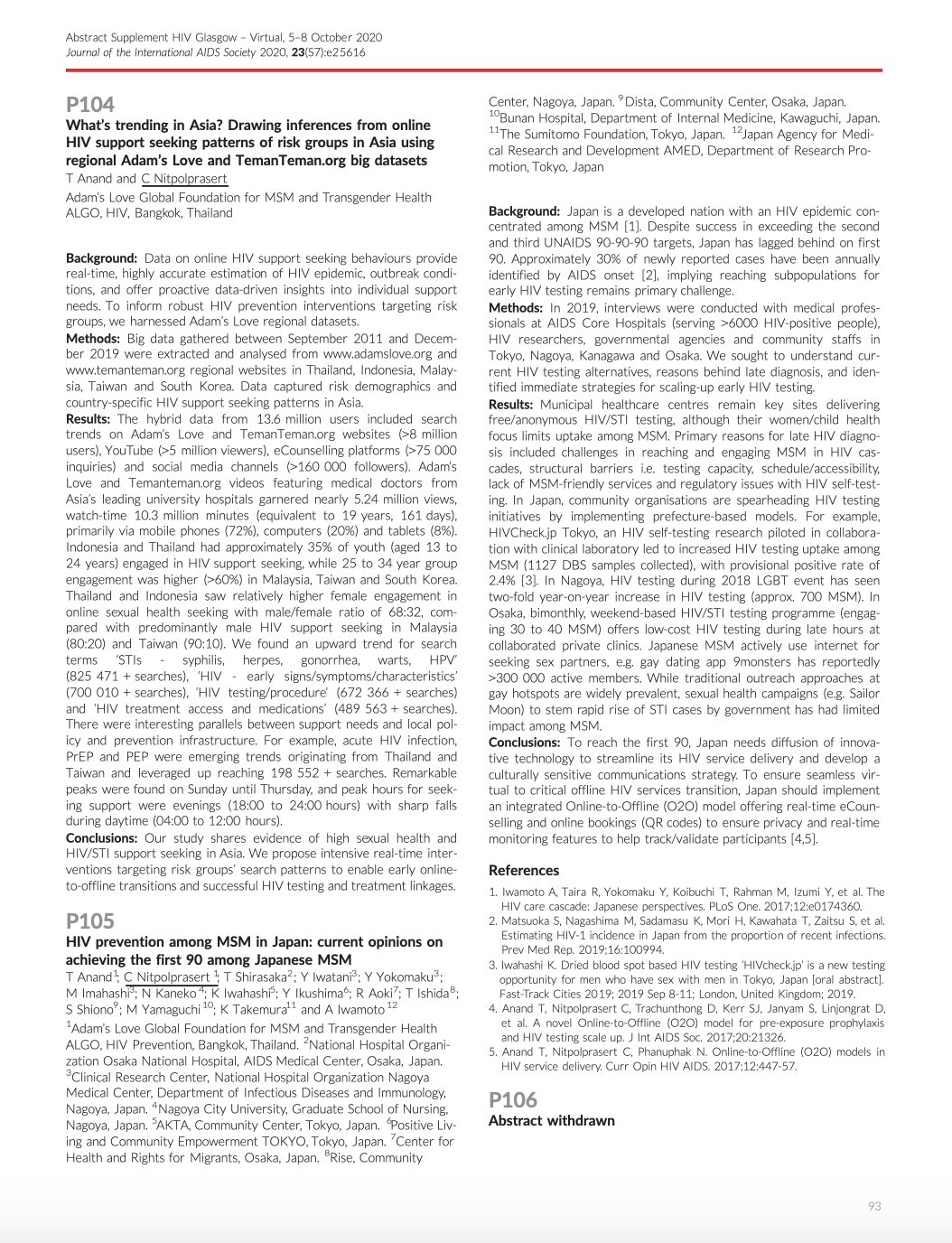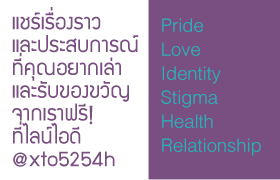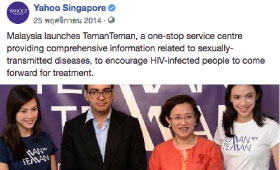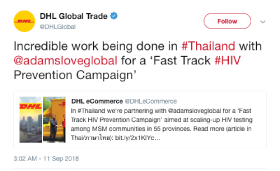|
|
What's trending in Asia? Drawing inferences from online HIV support seeking patterns of risk groups in Asia using regional Adam's Love and TemanTeman.org big datasets
P104
What's trending in Asia? Drawing inferences from online HIV support seeking patterns of risk groups in Asia using regional Adam's Love and TemanTeman.org big datasets
Tarandeep Anand and Chattiya Nitpolprasert
Adam's Love Global Foundation for MSM and Transgender Health ALGO, HIV, Bangkok, Thailand
HIV Glasgow – Virtual, 5–8 October 2020
Journal of the International AIDS Society ( IF 5.553 ) Pub Date : 2020-10-05 , DOI: 10.1002/jia2.25616
Download Adam's Love Big Data Research published online via the Journal of the International AIDS Society. Abstracts. Open Access. HIV Glasgow – Virtual, 5–8 October 2020.
Background: Data on online HIV support seeking behaviours provide real‐time, highly accurate estimation of HIV epidemic, outbreak conditions, and offer proactive data‐driven insights into individual support needs. To inform robust HIV prevention interventions targeting risk groups, we harnessed Adam's Love regional datasets.
Methods: Big data gathered between September 2011 and December 2019 were extracted and analysed from www.adamslove.org and www.temanteman.org regional websites in Thailand, Indonesia, Malaysia, Taiwan and South Korea. Data captured risk demographics and country‐specific HIV support seeking patterns in Asia.
Results: The hybrid data from 13.6 million users included search trends on Adam's Love and TemanTeman.org websites (>8 million users), YouTube (>5 million viewers), eCounselling platforms (>75 000 inquiries) and social media channels (>160 000 followers). Adam's Love and Temanteman.org videos featuring medical doctors from Asia's leading university hospitals garnered nearly 5.24 million views, watch‐time 10.3 million minutes (equivalent to 19 years, 161 days), primarily via mobile phones (72%), computers (20%) and tablets (8%). Indonesia and Thailand had approximately 35% of youth (aged 13 to 24 years) engaged in HIV support seeking, while 25 to 34 year group engagement was higher (>60%) in Malaysia, Taiwan and South Korea. Thailand and Indonesia saw relatively higher female engagement in online sexual health seeking with male/female ratio of 68:32, compared with predominantly male HIV support seeking in Malaysia (80:20) and Taiwan (90:10). We found an upward trend for search terms ‘STIs ‐ syphilis, herpes, gonorrhea, warts, HPV’ (825 471 + searches), ‘HIV ‐ early signs/symptoms/characteristics’ (700 010 + searches), ‘HIV testing/procedure’ (672 366 + searches) and ‘HIV treatment access and medications’ (489 563 + searches). There were interesting parallels between support needs and local policy and prevention infrastructure. For example, acute HIV infection, PrEP and PEP were emerging trends originating from Thailand and Taiwan and leveraged up reaching 198 552 + searches. Remarkable peaks were found on Sunday until Thursday, and peak hours for seeking support were evenings (18:00 to 24:00 hours) with sharp falls during daytime (04:00 to 12:00 hours).
Conclusions: Our study shares evidence of high sexual health and HIV/STI support seeking in Asia. We propose intensive real‐time interventions targeting risk groups’ search patterns to enable early online‐to‐offline transitions and successful HIV testing and treatment linkages.
|
















